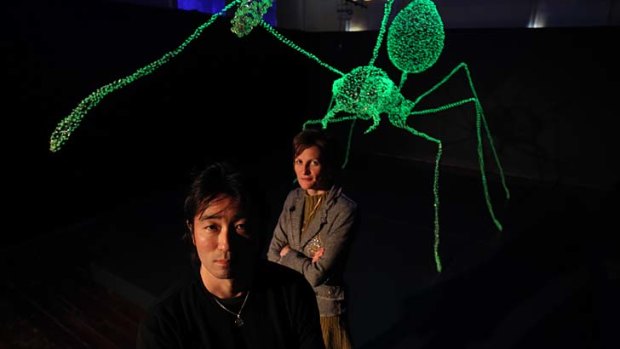KEN and Julia Yonetani are adamant their radioactive artworks are safe. They even had scientists from the Australian Nuclear Science and Technology Organisation measure the amount of radiation produced by the works in What the Birds Knew.
Yet it's hard not to feel apprehensive in the presence of installations that glow brightly because of the uranium glass beads used in their creation.

Strong nucleus ... Ken and Julia Yonetani at the 4A Centre for Contemporary Asian Art.Credit: Anthony Johnson
''I guess when you turn on the light and it glows and you've been handling it all day you go 'oh','' Julia says. ''We got the beads tested just to make sure because when people hear 'uranium' they automatically think of danger.''
The couple, who have previously created artworks with salt and sugar, used 50,000 uranium glass beads in USA, a two-metre-wide chandelier that illuminates the ground floor of the 4A Centre for Contemporary Asian Art in Haymarket. It is the largest of the 30 chandeliers they will create to represent the nuclear-powered nations of the world.
Upstairs, a six-metre ant made of 10,000 beads stands opposite glowing warning signs that read ''meltdown'' and ''radioactive''. The uranium glass came from a US company and wasn't difficult to import into Australia nor dangerous to use.
Uranium glass is not sufficiently radioactive to pose a health hazard to viewers either, the Yonetanis say. It was widely used in the late 19th-century to make decorative objects such as sugar bowls, cake stands and drinking glasses.
The installations might emit less radiation than a smoke detector or mammogram but they are designed to convey the fear of contamination that Japan has been living with since last year's Fukushima nuclear disaster.
''We were trying to bring to the viewer the fear of the unknown,'' Julia says.